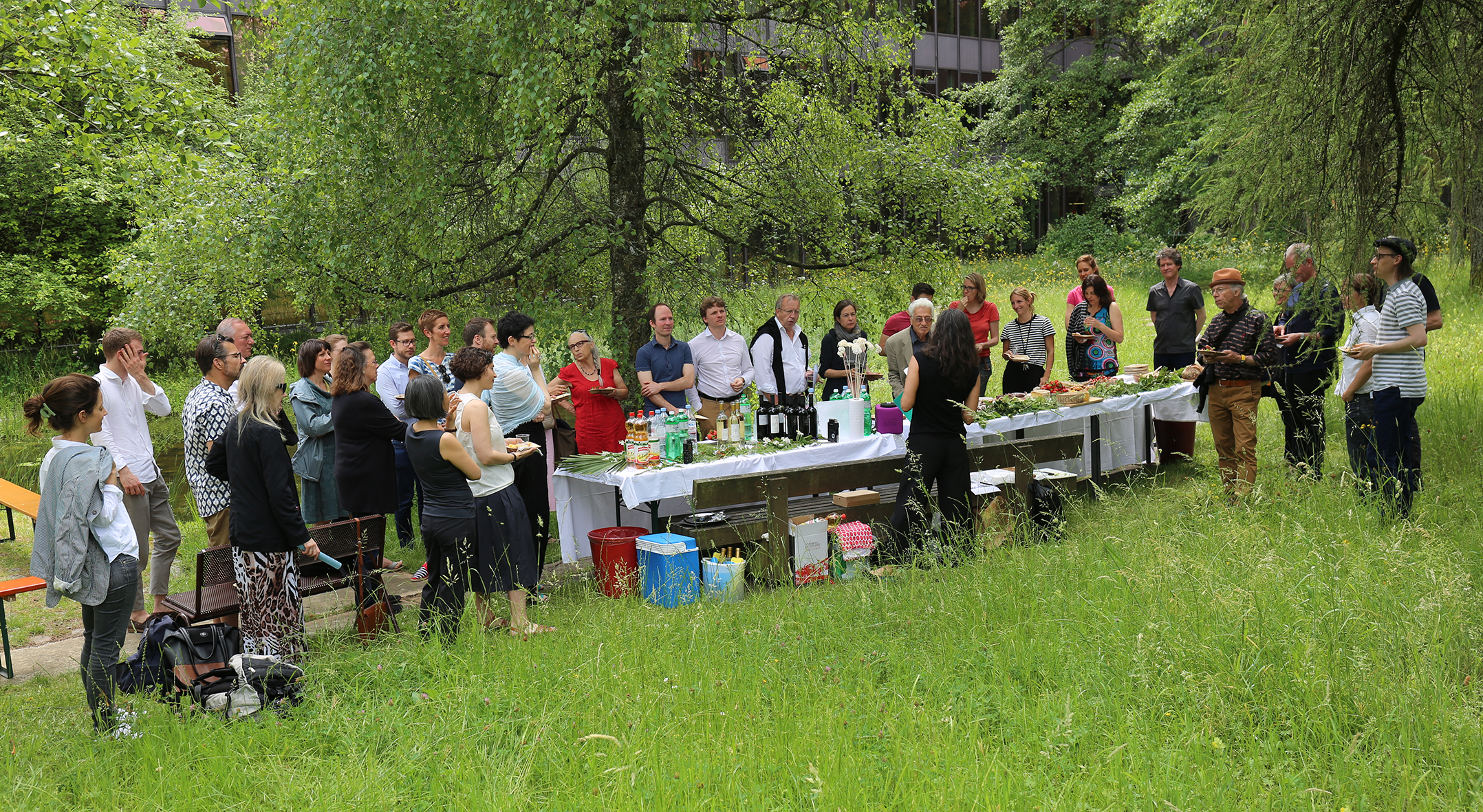Welcome to our new blog!
This first entry suitably reports on the first public event of the FRR@ETH research project: the open-air Ticinese lunch that took place in the hidden retreat of the Flora-Ruchat-Roncati Garden (if you didn’t know it existed, look it up: it’s even shown on the Google map of the campus!). Among our guests we had the pleasure to greet several of Flora’s teaching assistants: Stephan Mäder, Dieter Geissbühler, Kaschka Knapkiewicz, Markus Friedli, Martin Häner, Andrea Gubler and Felix Peyer, several former students, including Beatrice Aebi, Sabine von Fischer and Barbara Fontolliet-Brenna, as well as personal friends and family, most notably represented by Anna Ruchat. We were also joined by several younger students, colleagues and friends from ETH and beyond, whose presence confirms the interest that this original figure continues to elicit, including from those who never met her in person.
Under the methodological banner of Oral Histories, this informal gathering offered an enlightening first account of Flora Ruchat’s impact on the formation of several generations of Swiss architects during her time at ETH. The discussion focused principally on her collaborative design and pedagogical approaches, and helpful suggestions were made of supplementary sources and angles to investigate in our research. Two themes dominated the discussion. Firstly, most of the participants shared memories of Flora Ruchat’s magnetic personality, her strong teaching and personal skills as teacher and designer, and her cultural and intellectual standing among ETH faculty. Secondly, both assistants and students commented on an important aspect of the Ruchat-Roncati Chair at ETH being the “absence of doctrine”. In contrast to the individual and sometimes rigid methodologies of several well-known contemporary professors, her students spoke fondly of a studio where personal explorations were encouraged in a flexible, open, yet probing and rigorous didactic framework. Hence the task of our own research gained sharper definition. Most often, the literature on studio teaching cultures outlines clear, step by step methodologies pursued by celebrity (male) figures such as Bernhard Hoesli, Aldo Rossi, Hans Kollhoff, and the protagonists of the Analoge Architektur studio. In contrast to that, in order to offer a structured understanding of Flora Ruchat-Roncati’s complex role at ETH, our team faces the challenge of defining new devices and procedures that can capture more elusive aspects of architectural education, including interpersonal transfers of professional knowledge.
We would like to thank all participants for their precious time and input, to Julie Mongodin for her assistance with organisational matters, and to Ed Bukota for his availability and helpfulness. We are grateful for the generous sponsorship of SIA that made this event possible.
